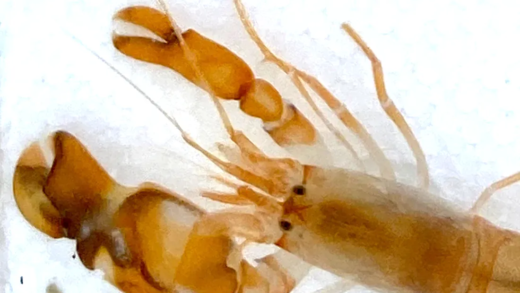The Atlas moth is the largest moth in the world, reaching impressive wingspans of 10-12 inches. Its wings feature unique patterns that serve for camouflage and predator deterrence. This moth thrives in Southeast Asia’s tropical forests, and its life cycle includes distinct stages from egg to adult. Adult Atlas moths primarily feed on tree sap, while larvae consume a variety of leaves. Their mating rituals involve pheromones and elaborate displays. Culturally, they symbolize transformation and beauty in various societies.
Atlas Moth Size: How Big Are They?
The Atlas moth holds the title of the largest moth in the world. Its impressive wingspan can reach up to 10-12 inches (25-30 cm), which makes it a sight to behold. To put this into perspective, the Atlas moth is significantly larger than most other moth species. For example, the common house moth typically measures only about 1-2 inches (2.5-5 cm) in wingspan.
Such size is not just for show; it serves practical purposes. The vast wings of the Atlas moth allow it to glide gracefully through its habitat, primarily found in the tropical and subtropical forests of Southeast Asia. The moth’s size also plays a role in its survival, as larger creatures can sometimes intimidate potential predators.
In summary, the Atlas moth’s remarkable size distinguishes it from other moths, showcasing nature’s diversity and the adaptations of species for survival.
Unique Features of Atlas Moth Wings: What Makes Them Stand Out?
The wings of the Atlas moth are not only large but also uniquely patterned. Their distinctive coloration and designs serve multiple functions, making them a fascinating subject of study. The upper side of the wings features rich browns, rusts, and creams, which help the moth blend into the forest floor, providing camouflage from predators.
What truly makes the wings stand out are the eye-like patterns on their tips. These mimic the eyes of larger animals, potentially scaring off predators like birds. Additionally, the edges of the wings are shaped like snake heads, further enhancing their ability to deter threats.
Overall, the unique features of the Atlas moth’s wings not only serve aesthetic purposes but also play crucial roles in its survival strategies.
Wing Patterns for Defense: How Does the Atlas Moth Scare Predators?
The Atlas moth utilizes its impressive wing patterns as a primary defense mechanism. The eye spots and patterns are not just for decoration; they are vital for its survival. When threatened, the moth can spread its wings wide, revealing these striking patterns to create the illusion of a larger, more dangerous creature.
This strategy is known as mimicry and is effective in deterring birds and other predators that might consider the moth as prey. For instance, studies have shown that predators are less likely to attack when they perceive a potential threat that resembles a larger animal.
In conclusion, the wing patterns of the Atlas moth serve as a remarkable example of nature’s ingenuity in predator defense. By using visual deception, the moth increases its chances of survival in a world filled with threats.
Atlas Moth Habitat: Where Can You Find Them?
The Atlas moth thrives in the warm, tropical and subtropical forests of Southeast Asia. Its range extends through countries like Indonesia, Malaysia, Thailand, and parts of India. These moths prefer dense vegetation where they can hide from predators and find food sources.
Key characteristics of their habitat include:
- Tropical Rainforests: Atlas moths are primarily found in lush, humid environments where they can camouflage easily.
- Altitude: They typically inhabit areas from sea level up to about 1,000 meters (3,280 feet) above sea level.
- Food Sources: Their habitats support a variety of plants that serve as food sources for their larvae, including species of the laurel family.
In summary, the Atlas moth’s natural habitat is vital for its survival, providing not only a safe place to hide but also abundant resources for feeding and reproduction.
Life Cycle of the Atlas Moth: From Egg to Adult
The life cycle of the Atlas moth is a fascinating journey that showcases its transformation from an egg to a magnificent adult moth. This process can be broken down into several stages:
- Egg: Female Atlas moths lay approximately 200-300 eggs on the leaves of suitable host plants.
- Larva (Caterpillar): After a week, the eggs hatch into caterpillars that feed on leaves, growing rapidly and shedding their skin several times. This stage lasts about 4-6 weeks.
- Pupa (Chrysalis): The caterpillar then forms a pupa, which can last from a few weeks to several months, depending on environmental conditions.
- Adult Moth: Finally, the adult emerges from the chrysalis, ready to take flight and continue the cycle.
This life cycle highlights the adaptability of the Atlas moth to its environment and the various stages it undergoes to reach adulthood.
Interesting Behaviors of the Atlas Moth: What Do They Do?
The Atlas moth exhibits several unique behaviors that contribute to its survival and reproduction. These behaviors include:
- Camouflage: Adult Atlas moths often rest with their wings closed, blending in with the foliage and avoiding detection by predators.
- Flight Patterns: They are capable of gliding gracefully, using their large wings to navigate through dense forest canopies.
- Mating Rituals: Males are known to release pheromones to attract females, often engaging in elaborate courtship displays.
- Feeding Habits: While adults do not feed as much, they can be seen sipping on tree sap, which provides essential nutrients.
These fascinating behaviors not only highlight the adaptability of the Atlas moth but also their role within the ecosystem, showcasing their unique strategies for survival.
Feeding Habits: What Do Atlas Moths Eat?
The Atlas moth has a unique approach to feeding, particularly as adults. Interestingly, adult Atlas moths do not feed on traditional nectar sources like many other moths. Instead, they primarily obtain nutrients from tree sap, fermented fruit juices, and occasionally from the moisture found on the leaves of plants. This diet is essential for their survival, especially since adult moths live only for a few weeks.
During their larval stage, however, the diet is quite different. The caterpillars of the Atlas moth feed voraciously on a variety of leaves, primarily from plants in the laurel family, which provide the necessary nutrients for their rapid growth. This stage lasts about 4-6 weeks, during which they can grow significantly, shedding their skin multiple times.
In summary, while adult Atlas moths have a more limited diet focused on sap and fruit, their larvae have a diverse range of food sources that support their development into one of the largest moths in the world.
Mating Rituals of the Atlas Moth: How Do They Find Partners?
The mating rituals of the Atlas moth are as fascinating as their physical attributes. Males are known to be quite active in their search for partners. They release pheromones into the air, which are chemical signals that attract females from considerable distances. This method of communication is crucial, as it helps males locate females, who may be resting or camouflaged within their habitat.
Once a male has detected a female’s pheromones, he performs an elaborate courtship display, which may involve fluttering his wings and moving in a dance-like manner to impress her. This display is not just for show; it helps ensure that the female is receptive to mating.
After mating, females lay approximately 200-300 eggs on the leaves of suitable host plants, continuing the cycle of life for the Atlas moth. These mating behaviors highlight the intricate and often delicate balance of nature’s reproductive strategies.
Cultural Significance: How Are Atlas Moths Viewed in Different Cultures?
The Atlas moth holds a significant place in various cultures, often symbolizing different traits and meanings. In many Southeast Asian cultures, the Atlas moth is viewed as a symbol of transformation and beauty due to its remarkable size and striking wing patterns. Its presence is sometimes associated with good fortune and prosperity, reflecting the moth’s majestic appearance.
In addition, certain indigenous groups in the regions where the Atlas moth is found regard it as a totem or spiritual symbol, representing the connection between the physical and spiritual realms. Its life cycle, from egg to caterpillar to adult moth, serves as a powerful metaphor for change and growth.
Overall, the Atlas moth is not just a fascinating insect; it embodies cultural narratives that resonate with themes of transformation and beauty across different societies.





Comments are closed.